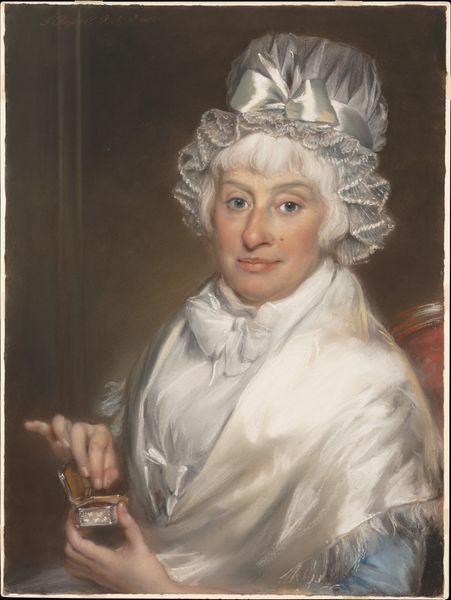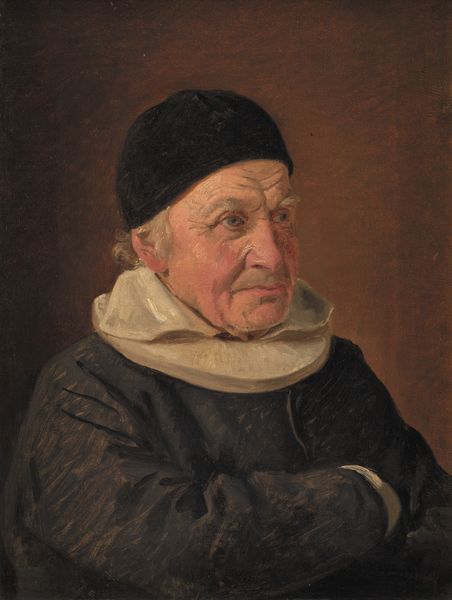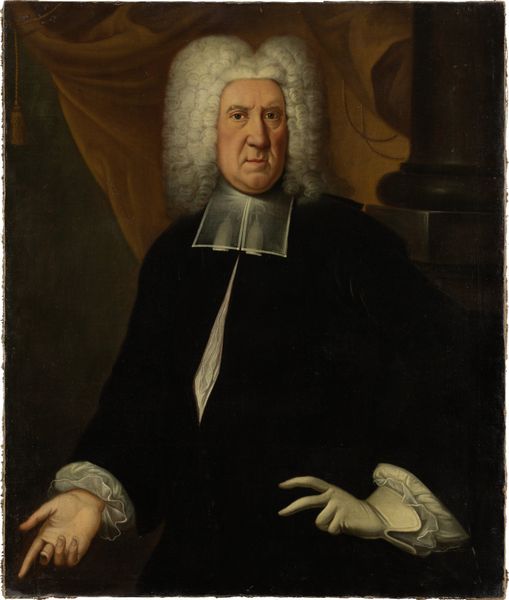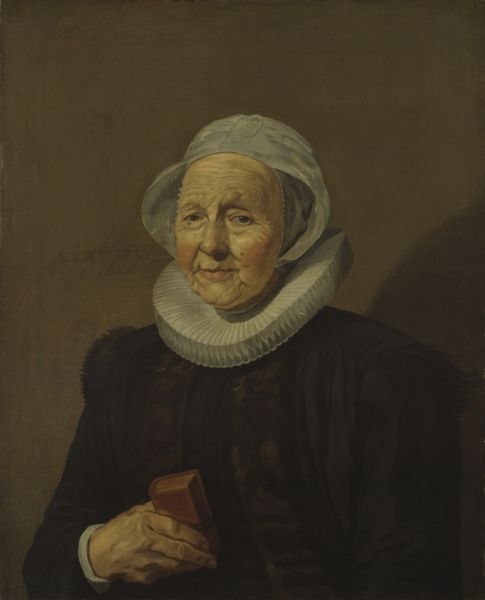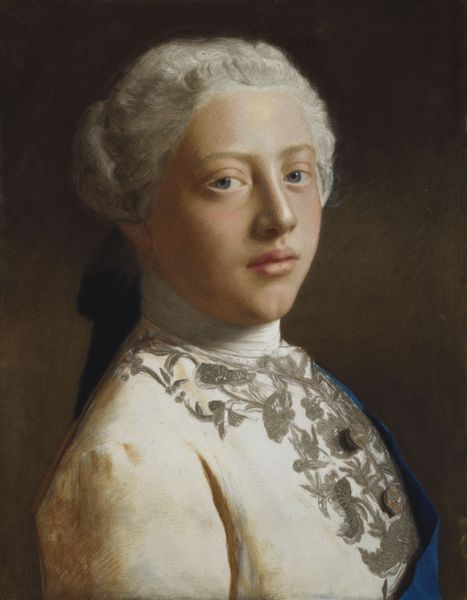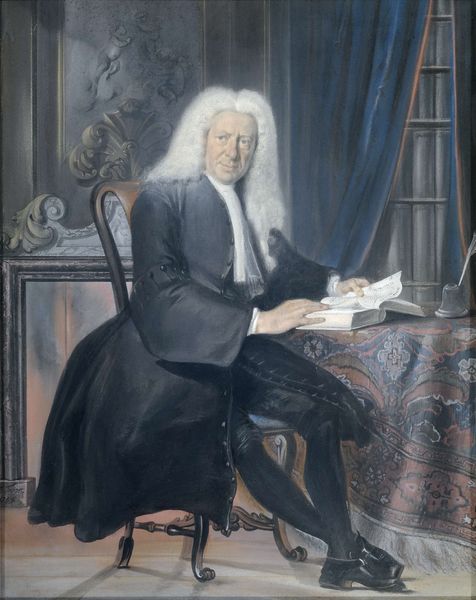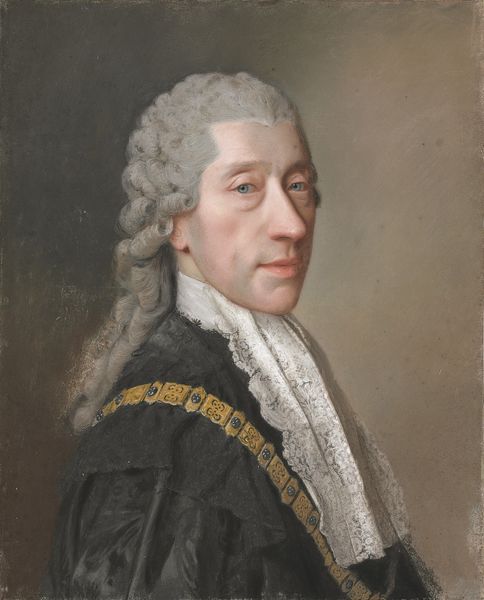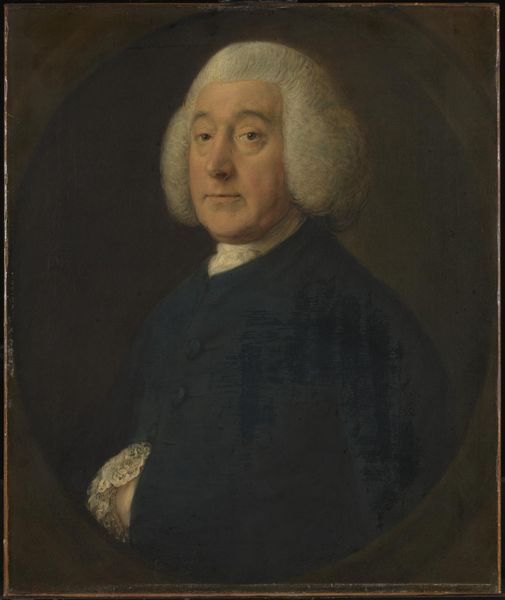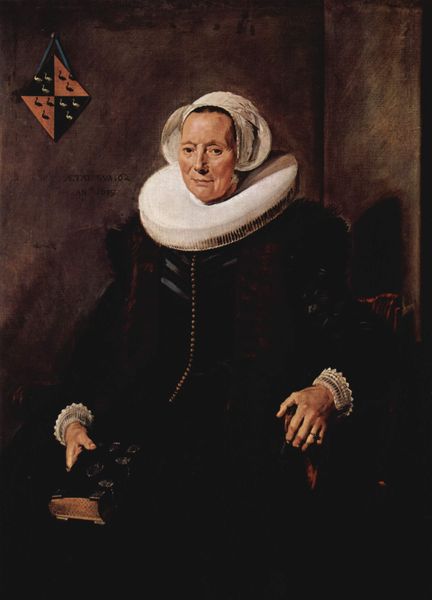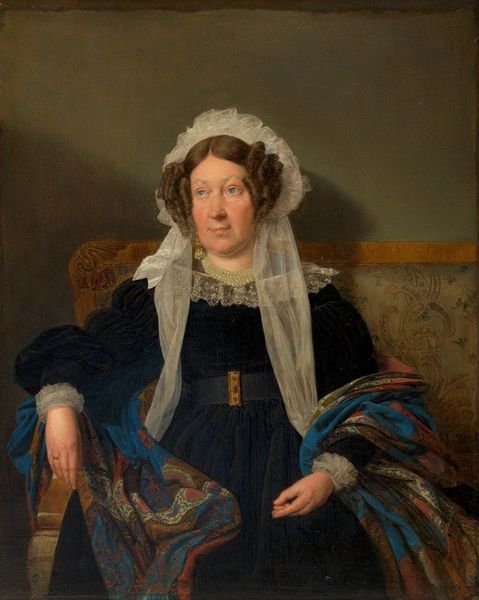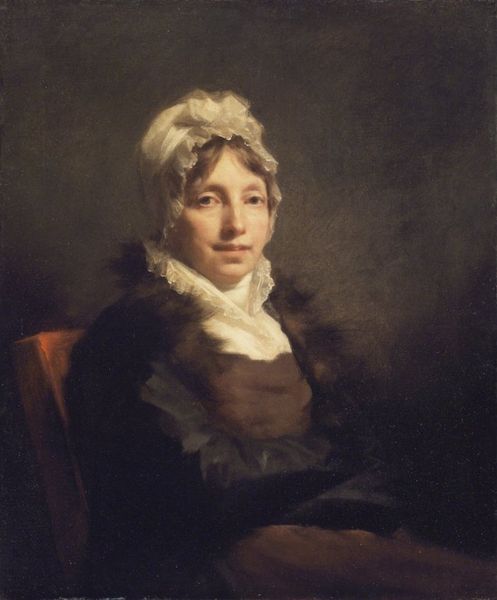
Fru Lindam, f. Goos, enke efter superkargo Lindam i Ostindien 1839
0:00
0:00
painting, oil-paint
#
portrait
#
painting
#
oil-paint
#
figuration
#
romanticism
#
genre-painting
#
realism
Dimensions: 67.5 cm (height) x 57 cm (width) (Netto), 86 cm (height) x 75.8 cm (width) x 6 cm (depth) (Brutto)
Curator: Let's turn our attention to this 1839 painting by J.V. Gertner, currently residing at the SMK, titled "Fru Lindam, f. Goos, enke efter superkargo Lindam i Ostindien," which translates to "Mrs. Lindam, born Goos, widow of supercargo Lindam in the East Indies." It is an oil-on-canvas portrait of a wealthy woman in her later years. Editor: Immediately, I'm struck by her face. It's etched with...what is it? Experience? Perhaps even a kind of weariness, but also a quiet strength. It makes me wonder about the tales those eyes could tell. And that ornate bonnet - such a contrast to her rather solemn expression. Curator: The painting operates within the stylistic realms of both Realism and Romanticism, capturing not just a likeness, but an essence. It's interesting to consider how Gertner navigates representing elite women within the constraints of 19th-century Danish society, given that she is clearly upper class but not nobility. What commentary is he perhaps making, and what narratives are obscured through the composition of class and status? Editor: It feels less about commentary and more about presence. Look at the meticulous details—the lace, the shawl, the deep blue of her dress, each thread whispering tales of far-off lands and untold wealth. Yet, her posture and gentle eyes convey something different than pomp or opulence. Does that not spark something within? I just have the feeling I want to reach out, and tell her she's beautiful, wrinkles and all. Curator: That impulse touches on the power of portraiture. It's about capturing a subject’s material reality while subtly reinforcing their social standing through dress and composition. These elements, however carefully chosen, play into established power dynamics of gender and wealth, reflecting a specific moment within the bourgeois milieu. But more, do you think she wanted that kind of immortality conferred through art? Editor: Oh, certainly! I suspect every painted soul desires a touch of that immortal fire, to live on through brushstrokes long after breath has faded. And there, standing silently on the wall, her secrets burn slow. Curator: Well said. Considering it all, this piece serves as both an intimate depiction and a symbol of its time, inviting complex dialogue regarding identity, history, and the enduring quest for representation. Editor: An encounter indeed—with a face, a life, and perhaps even a whisper of immortality itself. A lovely mystery tucked away in plain sight.
Comments
No comments
Be the first to comment and join the conversation on the ultimate creative platform.
